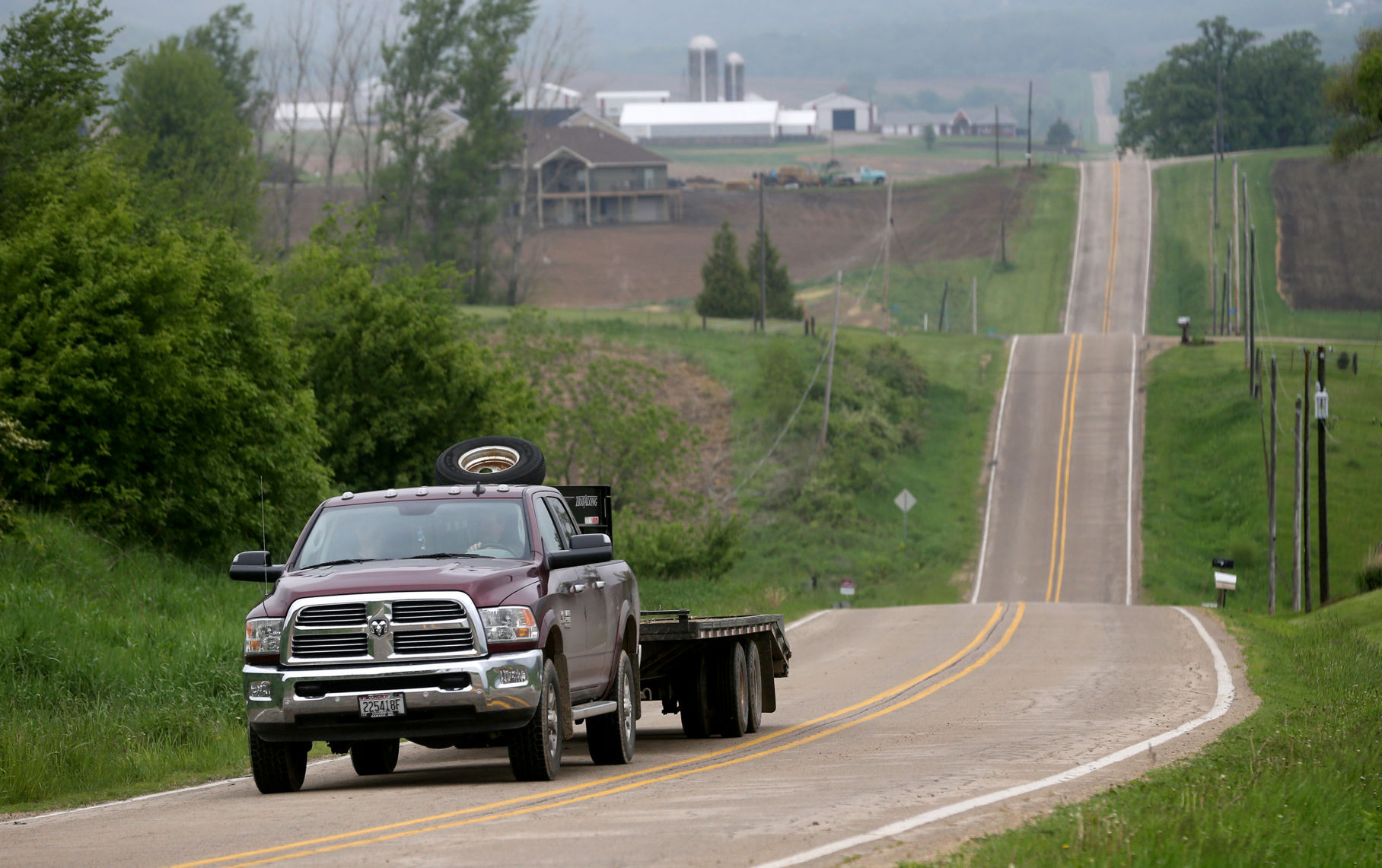Dubuque County staff propose creating a countywide financing district to help reprioritize projects at problematic road intersections.
County Auditor Kevin Dragotto and County Engineer Anthony Bardgett pitched the idea of creating a countywide tax increment finance district as a way to juggle funding for prioritized projects during a work session with the Dubuque County Board of Supervisors this week.
In a TIF district, taxes based on the incremental increases to property values would be rebated to the county and developers. The districts are development tools used primarily by city governments or school districts but can be used by counties, as well.
In recent years, county officials have discussed at length ways to address safety issues at intersections along U.S. 20 just east of Peosta, such as the one with Thunder Hills Road.
At that intersection, high speeds on the highway and vehicles turning from stop signs on Thunder Hills onto U.S. 20 make for a potentially deadly combination, said Chandra Ravada, director of transportation and transit services for East Central Intergovernmental Association.
However, many of the county’s secondary road projects are already scheduled on a timeline, with funds already allocated to that work.
For instance, one project currently scheduled before any work along U.S. 20 is resurfacing the length of Oakland Farms Road, located west of the Southwest Arterial near the City of Dubuque, Bardgett said.
“The road is deteriorating to the point where we have to do something to the surface of the road in the next three or four years,” he said. “Simply putting an overlay on this road is not the solution, because it’s narrow enough, deep enough. We have to think about a more in-depth type project. That’s going to take a lot of money.”
The county has planned to spend more than $3 million in Dubuque Metropolitan Area Transportation Study funds on that project by 2025. However, the supervisors also recently have been discussing the idea of closing intersections with U.S. 20 and creating a major frontage road alongside it.
“If you look at the growth, if you look at the development, you look at the businesses as far as jobs and community college, if you had to prioritize the two, I would want to spend more time and energy trying to figure out the Highway 20 corridor,” Supervisor Jay Wickham said.
Bardgett agreed and said it might be wise to shift DMATS dollars to the U.S. 20 project.
“If we were to take this DMATS funding and apply it to Thunder Hills, it may not be enough to finish things out there, but it is a great card to play with the (Iowa Department of Transportation),” he told supervisors. “We’d say ‘Hey, we’re coming up with $3 or $3.5 million. Help us match this.’”
However, he said he didn’t want the county to forget about Oakland Farms Road.
“We see 1,200 to 1,300 vehicles a day,” he said. “That is anticipated to increase with residential developments. We will have to figure out how to backfill the money we’d just remove from Oakland Farms Road.”
To that end, Dragotto proposed a county TIF district.
“There are some guidelines that need to be created and followed,” he said. “But the idea was that we could use a TIF district, that the county would run to fund projects for Anthony or (the) conservation (department). It was an idea for broad-based funding across the county.”
Dragotto said he thought the TIF district, and the funding the county could glean from it, would make the spending needed for Oakland Farms Road more appealing to supervisors.
“Why would we be spending county funding that will ultimately be annexed into the City of Dubuque?” he said. “The interesting thing about the TIF district is, it gives us the opportunity to help spur development out there. Because we’re not going to see development on Oakland Farms Road without restructuring the way the road is now. This gives us the opportunity to try something outside the box.”
Supervisor Ann McDonough said she was unsure how well the Oakland Farms Road project fit into the rules surrounding TIF districts.
“If the infrastructure is related to new residential development, those rules are very specific,” she said. “You also need to be showing that your TIF funding is to increase low- and moderate-(income) housing. But on Oakland Farms Road, those houses are going to be $300,000 to $400,000 homes.”
Bardgett and Dragotto said they would continue to discuss the possibility of TIF usage for that project and others in the county in coming weeks.



